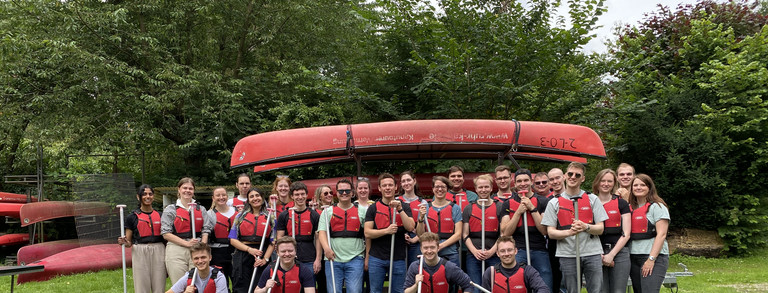Lukas Pansegrau

Curriculum Vitae
Lukas Pansegrau studied chemical engineering at the Technical University of Dortmund. He completed his studies in February 2010 with a diploma thesis on the topic of "Development of production scenarios for the preparation of profitability analyses".
From 2010 to 2013, he was a research assistant at the Chair of Plant and Process Engineering at the Technical University of Dortmund. In his research work, he mainly dealt with the investigation of emissions at gaseous - charged flange joints.
Field of Research
The limitation of emissions represents an important contribution to environmental protection and to increasing safety in chemical and petrochemical plants. The focus is on two groups in particular: On the one hand, substances that are harmful to health and, on the other, substances that are harmful to the climate or, to a lesser extent, the environment. Volatile organic compounds (VOCs) play a major role in this context.
In the past, emissions of these substances were minimized by subjecting direct sources such as chimneys, flares, etc. to technical improvements. By limiting emissions in this area, the proportion of diffuse sources (emissions from distributed sources that cannot be directly quantified) increased. These include, for example, valves, measuring points or flange connections. In the case of VOCs, the latter are responsible for about a quarter of all fugitive emissions from process plants.
The flange connection usually consists of the three core elements flange, bolting and gasket. In the past, the system was optimized primarily from a mechanical point of view to allow maximum surface pressure on the gasket. However, especially with the small flange connections that are often used, the mechanical load limit is reached. In order to minimize emissions from these small flanged joints, the focus today is therefore on the gasket as the component to be optimized.
However, to date it is only known in rudimentary form how leakage occurs in gaskets. Mass transfer models should help to uncover the influencing parameters of leakage. The main focus of research is on the interaction between the sealing material and the fluid.
Publications
Dissertation
- L. Pansegrau
Charakterisierung von fluiden Emissionen aus Rohleitungsflanschen
TU Dortmund, 2015, Verlag Dr. Hut, München ISBN 978-3-8439-2870-0
Paper
- C. Bramsiepe, L. Pansegrau, and G. Schembecker
Beitrag zur Modellierung diffuser Emissionen aus flüssig beaufschlagten Flanschverbindungen
In A. Riedl (Hrsg.) Die neue VDI 2290 und ihre Grenzen (2011) ISBN: 978-3-8027-2211-0
- C. Bramsiepe, L. Pansegrau, G. Schembecker
A model to predict fugitive VOC emissions from liquid charged flange joints with graphite gaskets
Chemical Engineering Journal 159 (2010) 11-16, doi.org/10.1016/j.cej.2010.02.014
- L. Pansegrau, C. Bramsiepe, G. Schembecker
Diffuse Emissionen von flüssig beaufschlagten Flanschverbindungen. Ein Vergleich von Labor- und Betriebsmessungen.
Technische Überwachung, 51 (9), (2010), S. 29-33.



